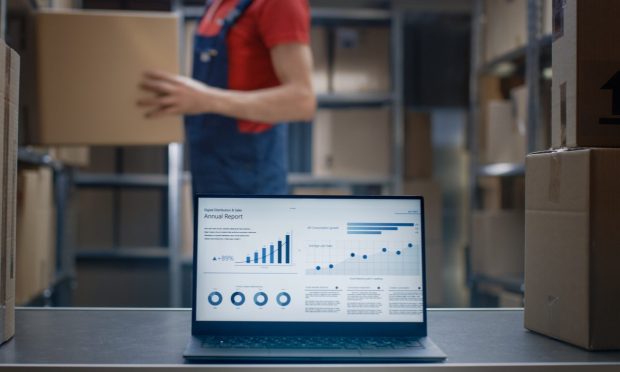Flush With Q4 Cash, Retailers are About to Embark on Inventory IT Spending Spree

Having not only survived, but thrived, through the fourth quarter’s supply chain headwinds and inventory challenges yet still delivered better-than-expected results, the nation’s retailers — flush with cash — are now poised to embark on a shopping spree of their own.
Where talk in the past focused on integration and omnichannel cohesion between stores and eCommerce, retailers are said to now be expressing a much more urgent need to have a “universal set of capabilities” that can deliver a good consumer experience no matter what the channel.
“Retailers have talked about that aspirationally but from an investment perspective, they’ve never really put their money where their mouth is and now we’re seeing much more around actually looking to invest in those capabilities,” Nikki Baird, VP of retail innovation at Aptos, an Atlanta-based retail technology firm, told PYMNTS.
Not only did Baird’s own firm receive a record number of RFPs from retailers over the holiday break, those IT upgrade inquiries are now coming in with a heightened sense of urgency, too.
“I think they all recognize just how much their business was at risk by not having made these investments before, so there’s definitely a level of aggressiveness,” she added, saying that clients have told her they are not only making these investments, but they want them completed this year.
“I’m not messing around. We’re going buy something, we’re going to implement it, and we’re going to start using it as soon as possible,” Baird said is the kind of thing she hears all the time now.
Inventory Hell
Having lived through months of inventory hell and looked the supply chain beast squarely in the eye, retailers have found themselves with a new mindset and new priorities for 2022.
“I can’t tell you the number of retailers that I’ve talked to over the past year that said, ‘My inventory strategy is completely out the window,’” Baird recalled. “Like every piece of inventory that I put in my store I thought was going to go out the front of the store in sales, but at least 30% of it — if not more — ended up going out of the back of the store because I ended up fulfilling it to meet online demand.”
That surge in eCommerce shopping, which PYMNTS’ data show is something 1 in 3 consumers did in December, has been both a blessing and a curse, at least as far as the commensurate increase in merchandise returns is concerned. That’s because, Baird says, many lack the planning know-how and experience needed to operate in a true omnichannel world, where physical stores must now play multiple roles including fulfilling website orders and, increasingly, serving as a return location.
“If I send a bunch of inventory to a store and it sells out because online demand came and picked all that inventory up, do I replenish that store now or do I just add more inventory to the eCommerce distribution center?” Baird said. “So it’s opening up questions that they’ve never had to answer before.”
It is also why she expects anything related to retail planning and inventory management is going to be in hot demand for the foreseeable future.
Non-Software Solutions
Some of the returns problem’s solution, she said, can be achieved by encouraging customers to return in-store but then having the ability — and trained staff — at the store needed to process that return and figure out how to dispose of that inventory.
“A lot of the retailers who do return-to-store today, they pretty much just throw it all in a box and ship it back to the DC (distribution center) and let the DC deal with it,” she said.
But that mindset is changing as retailers are taking a wider view of their stores and also seeing the cost savings of not having to ship things two or three times if they can be “made sellable” again by a store associate.
“Stores historically have only been an endpoint. Like once the inventory goes there the only way that inventory is going to leave the store is if a customer buys it, or if after I’ve done all my markdowns, I’m literally packing it up and shipping it out to go to an outlet store,” she said, “but now that’s just totally not the case.”
Dark Store, Gray Store, Omni 2.0
In addition to pent-up demand for inventory assistance, she said retailers are also taking a holistic portfolio approach to their properties that goes well beyond shops, websites and warehouses to include things like digital-orders-only dark stores, limited in-person purchasing through so-called gray stores and even more dropship locations.
Taken together, she said this multi-pronged property approach represents what is best described as omnichannel 2.0.
“I would say that it’s not a race honestly, it’s not like it’s a competition,” she said. “I really expect that retailers will have some hybrid model that addresses all of those things with almost a portfolio approach by region.”
